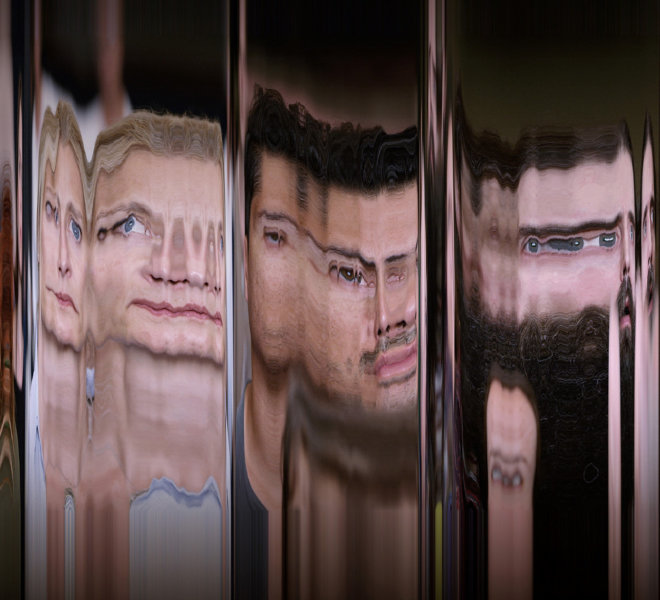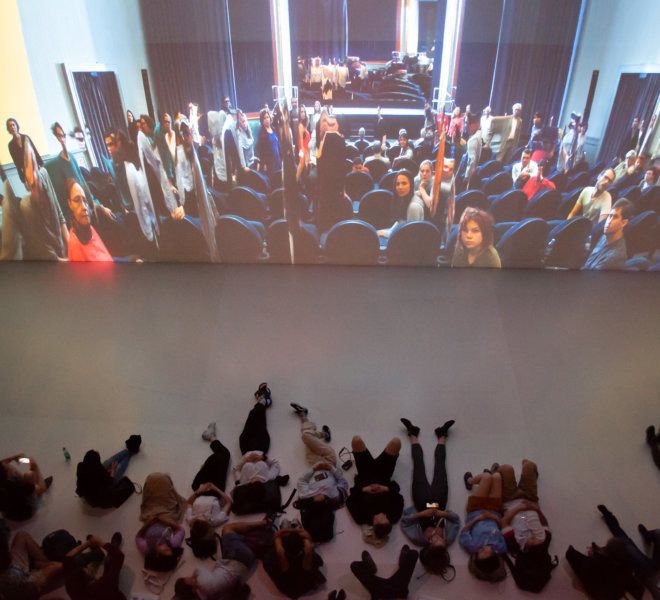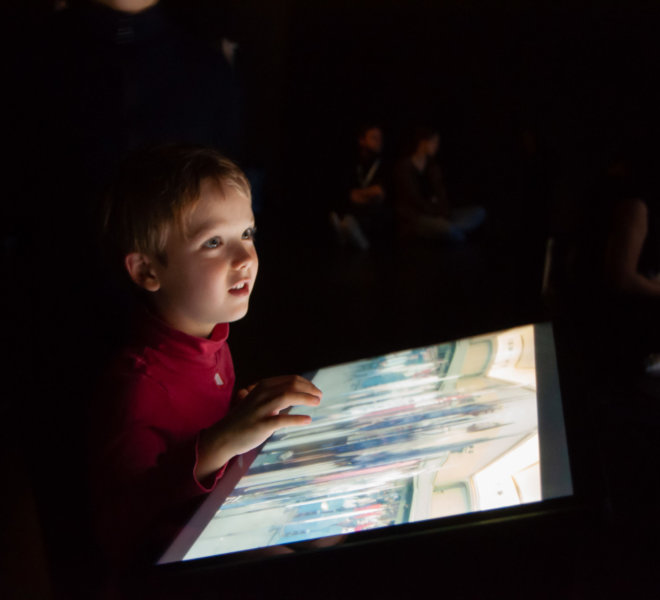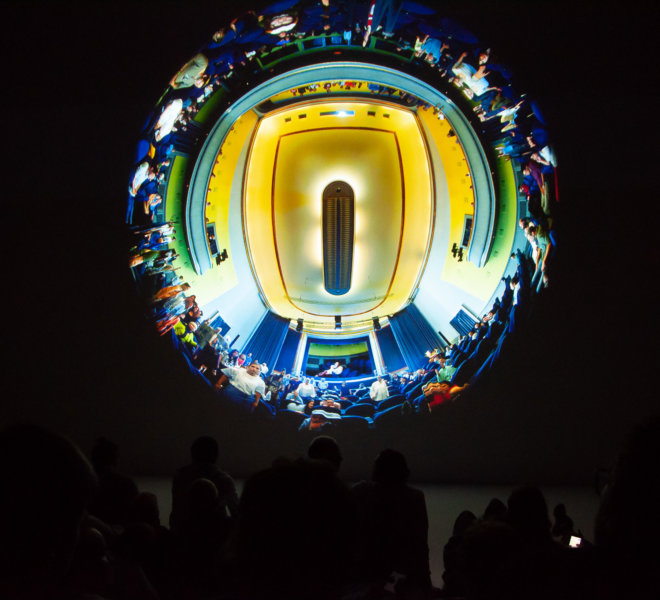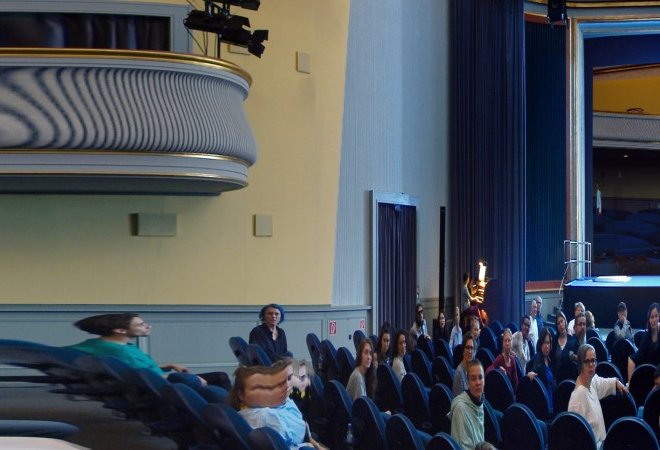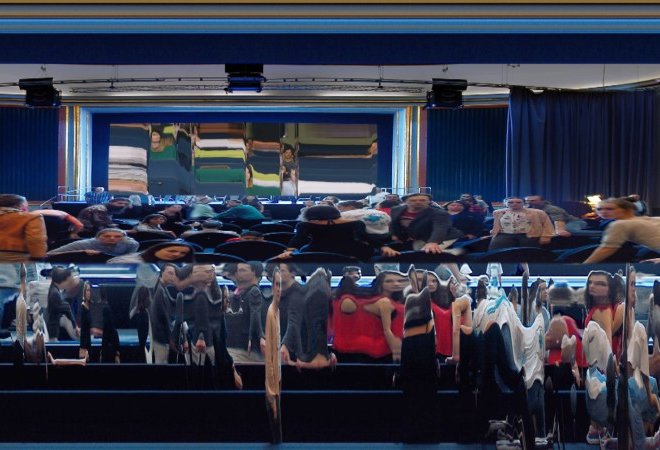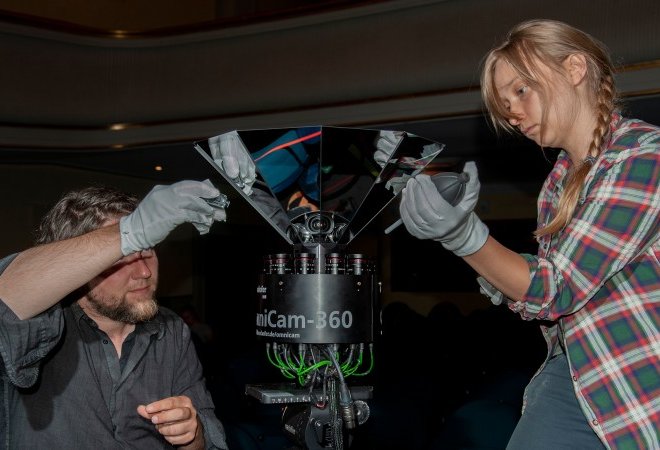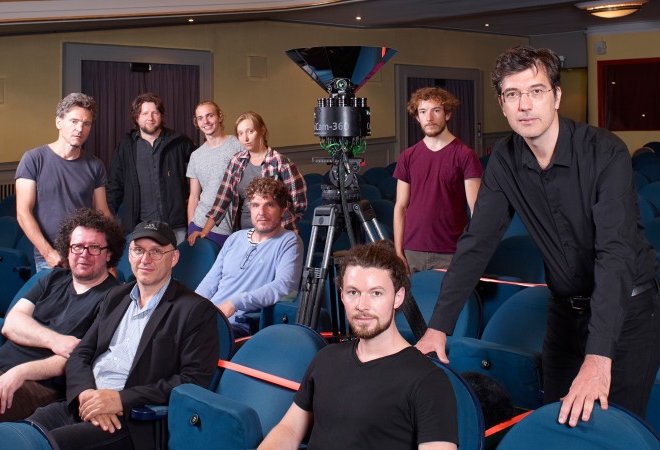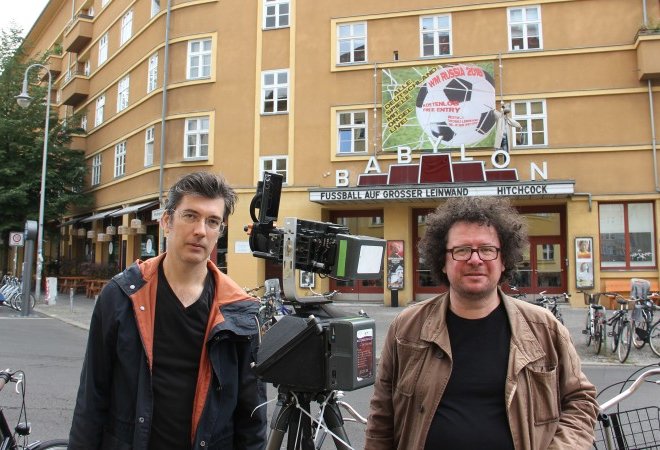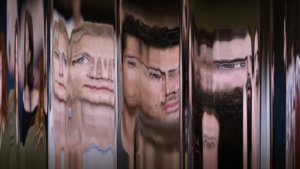
A space time cut through cinema.
Austria/Germany 2019
Introduction
Virgil Widrich Film- und Multimediaproduktions G.m.b.H. provided us with tx-reverse 360°, a space time cut through cinema. 20 years after Martin Reinhart and Virgil Widrich used this film technique for the first time in a short film (“tx-transform”, 1998), they again deal with the question of which previously unseen world arises when space and time are interchanged, aptly in a cinema and at full 360°.
Story
What is behind the cinema screen? It is not surprising that cinema-in-the-cinema scenes are often used in horror films. For they irritate and unsettle by reminding us – the immobile viewers hidden in the cosy darkness – of our own questionable position. What if the forces of unlimited imagination penetrate through the canvas into our reality? What if the auditorium dissolves and with it the familiar laws of cinema itself? In a way never before seen, “tx-reverse” shows this collision of reality and cinema and draws its viewers into a vortex in which the familiar order of space and time seems to be suspended.
Back in the 1990s, Martin Reinhart invented a film technique called “tx-transform”, which exchanges the time (t) and space axis (x) in a film. Normally, each individual film frame represents the entire space, but only a brief moment of time (1/24 second). In the case of tx-transformed films, however, the opposite is true: each film frame shows the entire time, but only a tiny part of the space – in cuts along the horizontal spatial axis, the left part of the image thus becomes the “before”, the right part the “after”.
20 years after Martin Reinhart and Virgil Widrich used this film technique for the first time in a short film (“tx-transform”, 1998), they again deal with the question of which previously unseen world arises when space and time are interchanged, aptly in a cinema and at full 360°: at the Babylon Kino in Berlin they filmed with the OmniCam-360 about 135 actors and calculated the installation “tx-reverse 360°” for the ZKM from this material.
Challenges
Massive amount of data due to the shooting format of 10K resolution. Creating a software that can open and close 10.000 images with a width of 10.000 pixels 10.000 times in a reasonable time. First tests: 54 days render time for one transformation. After rewriting the software and using a TGA-container for all the files the render time came down to 2 days.
Video
Making of tx-reverse 360°
Gallery
Technology
Shot with OmniCam-360 by Fraunhofer Institut Berlin in 10K resolution. Postproduction with tx-reverse Software by Matthias Strohmaier
Credits
Concept and direction: Martin Reinhart, Virgil Widrich
Music and sound design: Siegfried Friedrich
OmniCam-360: Jana Pape, Danny Tatzelt, Christian Weissig
tx-transform technology: Martin Reinhart
DOP: Martin Putz
Production assistants: Elias Wolf, Moritz Woll
Sound: Bastian Orthmann
Set photos: Alexander Grennigloh
Programming: Matthias Strohmaier
Post production consulting: Leonard Coster
Post production: Bernhard Schlick
Retouching: Patryk Senwicki, Dominic Spitaler, Peter Várnai
Cinema technology: Bernd Rohde
Cinema organ: Anna Vavilkina
Violin: Serkan Gürkan
Violoncello: Konstantin Zelenin
Singing, voice: Marlene Umlauft
Voices: Ira Prodeus, Oleg Prodeus
Sound mix: Georg Tomandl/Sunshine Mastering
VR Spatial Audio Mix: Thomas Aichinger, scopeaudio
VR post production: Axel Dietrich, vrisch
Thanks to: Roberta Bianchini, Judith Bihr, Eva Dertschei, Christian Dürckheim-Ketelhodt, Timothy Grossman, Susanna Kraus – IMAGO, Ingrid Truxa, Peter Weibel
Shot at Babylon Berlin
Production: Virgil Widrich Film- und Multimediaproduktions G.m.b.H.
© 2019
Distributor: Sixpack Film (short film), Lemonade Films (VR version)
Supported by Federal Chancellery Departement for the Arts, City of Vienna, Duerckheim Collection
Produced in cooperation with the ZKM | Center for Art and Media Karlsruhe

